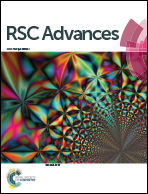Electrochemical degradation of RB19 dye using low-frequency alternating current: effect of a square wave
Abstract
This study mainly aims to investigate the effects of alternating current (AC) on Remazol Brilliant Blue R (RB19) dye removal from aqueous solutions by an electrochemical (EC) process. The effects of operating conditions on RB19 removal were investigated; the conditions include the AC frequency, the magnitude of a waveform in Vpp (AMPL) accompanied with a constant voltage that is added to an AC source (OFST), the supporting electrolyte (type and concentration), and the initial dye concentration. Moreover, the effects of variation in electrical conductivity, oxidation–reduction potential, and pH on the efficacy of the process were evaluated. Results showed that the highest RB19 removal efficiency with low electrode weight loss was obtained at AMPL and OFST of 8 Vpp and 0.2 V, respectively. Results of our kinetic study showed that the addition of NaCl as a supporting electrolyte has an enhancing effect on the rate constant, possibly because of an increase in the concentration of active oxidant species such as Cl2/OCl− in the electrolyte. A morphology study on the electrode surface showed that electrodes dissolved uniformly during the EC process. The loss on ignition (LOI) was determined to be 43.25% by X-ray fluorescence (XRF) analysis. The energy consumption and operating costs for RB19 removal using a square wave AC were evaluated. The results indicated that the use of a square wave AC is a promising wastewater treatment technique.


 Please wait while we load your content...
Please wait while we load your content...